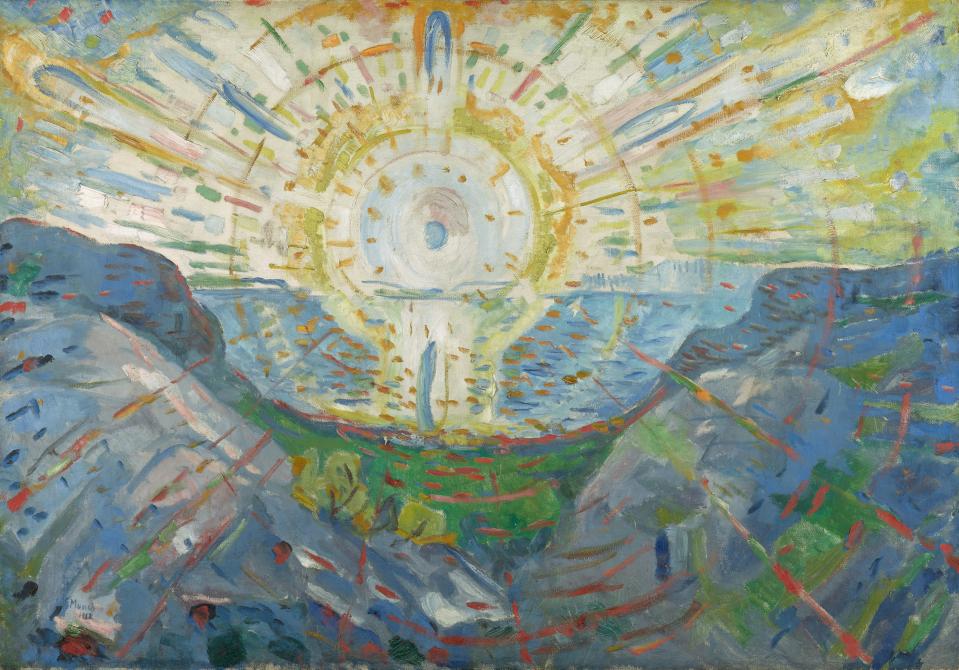Edward Munch’s Artworks Get a Striking New Waterfront Home in Oslo
- Oops!Something went wrong.Please try again later.
Spring was a recurring source of inspiration for Edvard Munch, whose vernal landscapes offered hopeful counterpoints to anguished icons like The Scream. But this spring marks an especially fresh start for Norway’s most famous painter (1863–1944). Along the radically transformed Bjørvika waterfront, finishing touches are being made to the new Munch museum, an eagerly anticipated showcase for the artist’s legacy.
The striking structure—13 stories tall, with a cranked silhouette that bows to the city center—replaces the museum’s longtime home, where cramped quarters did inadequate justice to a painter in thrall to light and nature. Designed by the international architecture firm Estudio Herreros, the new museum features 11 exhibition halls of varied ceiling heights and square footages, offering diverse and dynamic showcases for a collection that comprises some 42,300 personal objects, including 26,000 works by the artist. (Highlights include versions of The Scream and The Sun, Munch’s monumental mural at the University of Oslo.) In addition to long-term displays from this considerable trove, programming will include exhibitions devoted to kindred artistic spirits, both modern and contemporary.

The Sun
Built to Passive House standards, the museum is also a model of energy efficiency, with a goal to reduce greenhouse gas emissions by 50 percent over the life of the building. Natural ventilation, distinct climate zones, and innovative heating/cooling systems all play their part, as do low-carbon materials, concrete among them. Enigmatic cladding of perforated, recycled aluminum, for instance, shields the interiors from the harsh Nordic sun, helping to prevent temperature fluctuations while seemingly shifting in color over the course of the day.
“We knew that to propose a vertical museum was a risk,” says architect Juan Herreros, acknowledging local grumblings about the building’s nearly 200-foot height. But Munch of all people might approve. Nowadays there’s no better vantage point from which to take in the city and seascape that inspired him. munchmuseet.no —Sam Cochran
Originally Appeared on Architectural Digest

